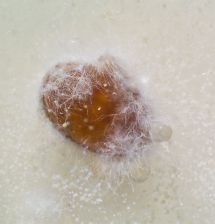Our Changing World for Thursday 25 September 2008
On this programme
The Marsden Fund announced its largest investment ever this week, giving the green light to 90 new projects. One of the projects, led by University of Canterbury's Richard Blaikie, aims to develop new methods for looking at, and creating, the very small. Recently, Professor Blaikie's team developed techniques to use visible light to see objects smaller than the light's wavelength. He talks to Veronika Meduna about plans to combine this technique with a new method of remote imaging to develop versatile "super lenses" that will allow the nanoworld to be explored like never before.
Worldwide, honey bees are under threat, most severely by the varroa mite and colony collapse disorder, now thought to be caused by the Israelite Acute Paralysis virus. However, New Zealand's native bees seem to be resistant to varroa. And in spite of their independent behaviour - they are solitary insects - they may be more useful as pollinators than scientists originally thought. Amelia Nurse talks to Mark Goodwin at HortResearch about what the bees are up against and to Brad Howlett at Crop and Food Research about what our native bees may be able to offer as pollinators in the future.


The common insect fungus Metarhizium is being used to treat beehives infected with verroa.


HortResearch honey bee research team placing hives on Great Mercury Island, off the coast of the Coromandel Peninsula.
After a successful launch earlier this month, the Large Hadron Collider at CERN had to be turned off again on Friday. Helium leaked into the tunnel, most likely due to a faulty electrical connection between two magnets, which melted at high current leading to mechanical failure. While the LHC project faces a two-month downtime, University of Canterbury physicist Phil Butler is already making use of one of the spin-off technologies to improve medical imaging equipment. He talks to Veronika Meduna about how the new imaging technology will improve diagnosis for many patients, and he explains the LHC experiment - the Compact Muon Solenoid, or CMS - for which it was developed in the first place.

A spectral x-ray transmission image of partly calcified bones of a human foetus at 20 weeks gestation.
Click here to see a PDF of this image including dimensions (Adobe Reader required).
Click here to see a CT slice of a mouse abdomen (Adobe Reader required).
For the next two weeks, Cambridge University virologist Chris Smith will discuss the latest research of some of his colleagues while he takes them on a punt along the River Cam. This week, he talks to plant scientist Beverley Glover and geophysicist Herbert Huppert.